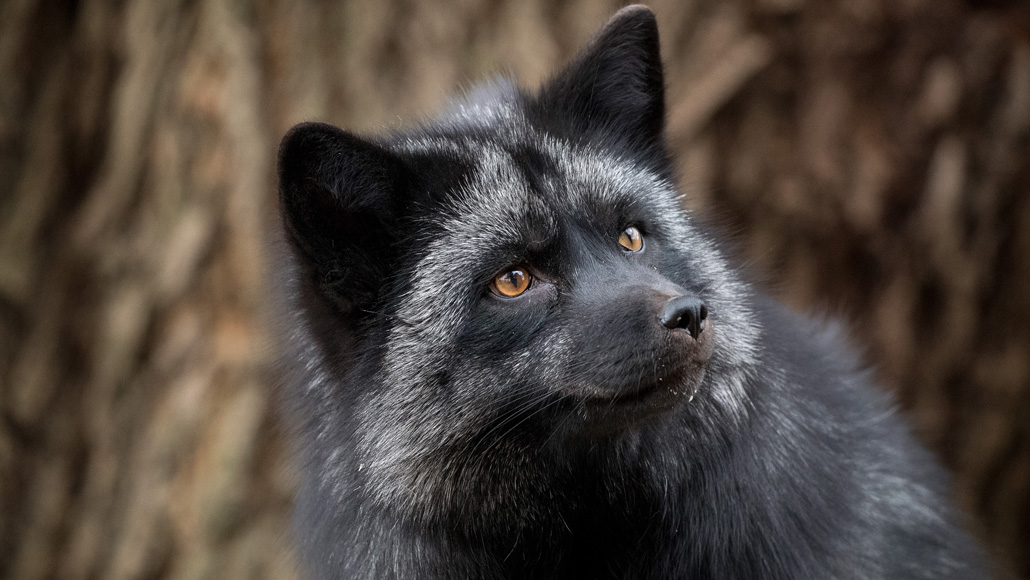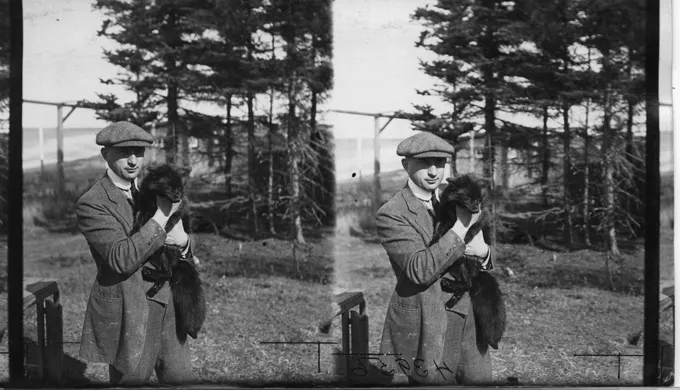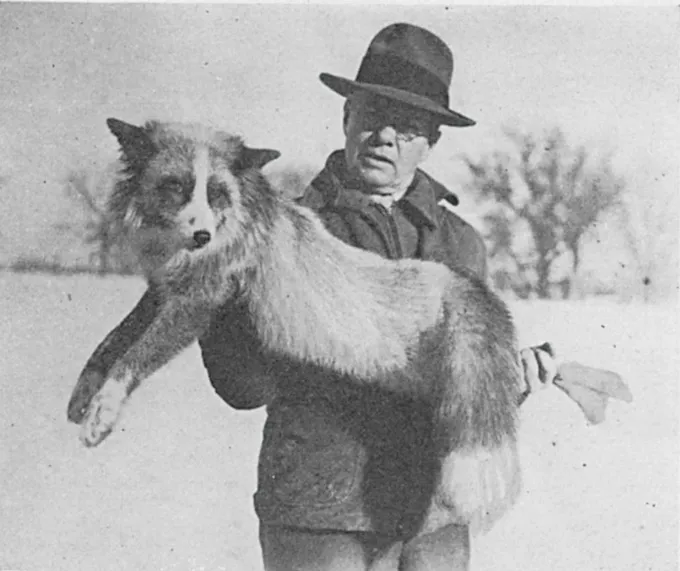
This image shows a dark-furred, silver fox similar to the variety bred for tameness in a famous, long-running experiment in Russia.
Monty Sloan
For the last 60 years, scientists in Siberia have bred silver foxes to be increasingly tame, with the goal of revealing the evolutionary and genetic underpinnings of domestication. This research also famously showed a link between tameness and such physical changes as curled tails and spotted coats, known as “domestication syndrome.”
But that story is flawed, some researchers now claim. The foxes weren’t totally wild to begin with, and some of the traits attributed to domestication existed long before the experiment began, Elinor Karlsson, a biologist at the University of Massachusetts Medical School in Worcester, and her colleagues argue. What’s more, the researchers cast doubt on whether domestication syndrome even exists, in a paper published online December 3 in Trends in Ecology and Evolution.
The impressively long silver fox experiment, ongoing at the Russian Academy of Sciences’ Institute of Cytology and Genetics in Novosibirsk since 1960, didn’t seek to breed foxes that looked so different from their wild counterparts. But several generations after geneticist Dmitry Belyaev took 130 silver foxes (Vulpes vulpes) from Soviet fur farms and began selecting for friendliness toward humans, the physical changes emerged. Floppy ears, piebald coats and other traits were known in other domesticated mammals, so the changes have since been thought of as a syndrome of traits inherently linked to the process of domestication of wild animals.
It’s no secret that the foxes weren’t truly “wild,” Karlsson says. The Soviet foxes originally came from fur farms on Prince Edward Island in Canada, with selective breeding dating back to at least the 1880s. One of Karlsson’s colleagues, on vacation on the island, stumbled across fur farm photographs from the 1920s during a visit to a local museum. Those foxes appeared tame with spotted coats — one of the same domestication traits claimed as a by-product of the Russian experiment that supposedly took generations to emerge.
“These photos dated from decades before the project had even started,” Karlsson says. The images “seemed to raise a lot of questions about exactly what had happened during the course of that project in terms of genetic changes in that population.”

This timeline undermines the narrative that the domestication syndrome traits sprang entirely out of Belyaev’s selection for tameness, Karlsson and her colleagues say.
“It changes the clock on [the changes],” Karlsson says. “These traits didn’t get created within 10 generations. They were actually preexisting in the population.”
Lyudmila Trut, who has been involved in the silver fox experiment from the start and now runs it, disputes Karlsson’s argument. Trut admits that a small percentage of the fur farm foxes (less than 10 percent) were not very fearful or aggressive towards humans. But “we repeatedly visited those large fur farms,” and none of the other traits associated with domestication syndrome were present, she claims. Karlsson’s allegation that tameness and white spotting were imported into the experiment along with the Canadian foxes is “a misguided contention, to say the least,” Trut says. In particular, spots “arose only under selection for tameness.”
Karlsson says the timeline revelation prompted by the photos not only raised questions about the experiment but also led her and her colleagues to reconsider a bigger question: What’s the evidence supporting domestication syndrome? They soon found that not only was domestication syndrome loosely defined, so was domestication itself. “Everybody kind of comes up with a different constellation of traits,” she says.
So the team developed its own criteria for the syndrome. For instance, the traits should appear shortly after the onset of breeding for tameness, and grow in frequency and degree with increasing tameness. She and her team then applied these criteria to “domestication syndrome” traits reported in the foxes and other domesticated animals, including pigs, goats and mice. No single species met all criteria, undermining the validity of a shared syndrome between domesticated mammals, the team claims.
Christina Hansen Wheat, a behavioral ecologist at Stockholm University, agrees that the theory of domestication syndrome isn’t well-supported by evidence. “I find it problematic that we continue to conduct research on domestication based on too broad and unclear definitions and untested hypotheses,” she says. “We need to reevaluate our expectations of the consequences of domestication.”
We summarize the week's scientific breakthroughs every Thursday.
But other researchers are casting their own doubts on the scientists’ takedown.
Adam Wilkins, an evolutionary biologist at Humboldt University of Berlin, says Karlsson’s study misrepresents domestication syndrome. It treats the syndrome as a specific and constant set of characteristics across domesticated mammals. But domestication syndrome has been envisioned as differing from species to species, he says. For instance, it may result in floppy ears in domesticated rabbits, pigs and sheep, but in smaller but similarly shaped ears in cats, ferrets, and camels.
In the Russia experiment, the physical traits didn’t crop up until six to 10 generations in, says Lee Alan Dugatkin, a behavioral ecologist at the University of Louisville in Kentucky who wrote a book on the Russian foxes with Trut (SN: 4/29/17). “It’s not as if those things were there when they got the foxes,” he says. “It’s extraordinarily unlikely that there was kind of hidden genetic variation for these traits.”
The fur farm images from the 1920s “could easily have [shown] animals that had been trained or learned how to be friendly with the person in the picture,” Dugatkin says. “That’s very different than suggesting that the animals [on Prince Edward Island] are inherently friendly.”

Dispute aside, Karlsson says she still views the fox experiment as tremendously important. Belyaev and his colleagues “were remarkably successful in selecting on behavioral traits and showing that they can create populations that have very different behaviors,” she says, noting that this has spurred ongoing research into the genetic and neurological elements to these behavioral changes (SN: 8/6/18). Such research may also unlock secrets about humans, particularly with regards to mental illnesses, Karlsson says.
Going forward, Karlsson thinks that research on domestication would be well-served by stepping away from domestication syndrome and thinking more about how these animals may be self-domesticating, driving their own modifications by adapting to people. As human influence grows in wild spaces, many species are likely changing in response to us, she says.
“Rather than worrying about our assumptions for what domestication is, looking at how species are changing to adapt to our presence would be — in some ways — a more intriguing way to think about the problem,” Karlsson says.






